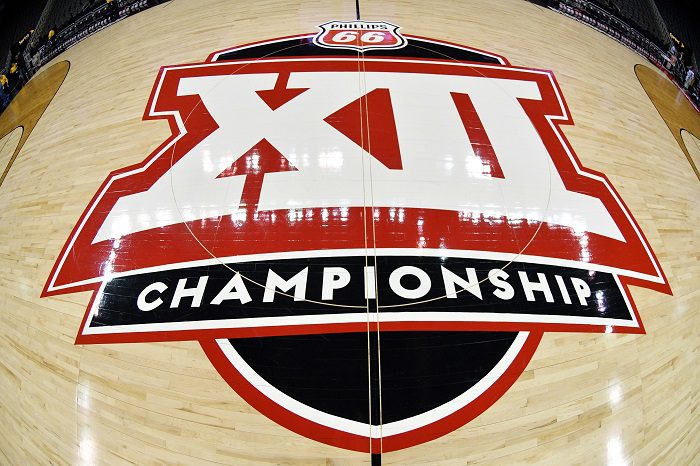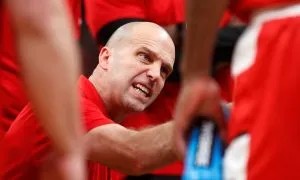Depth, Unpredictability Should Once Again Define Big 12 Basketball in 2019-20

So, where do we go from here?
Last March Kansas State and Texas Tech combined to end Kansas’ 14-year stranglehold on the Big 12 regular-season title. Then, a week later, Iowa State claimed the Big 12 Tournament title in Kansas City.
The last time that happened? That was 2004. Oklahoma State won both the regular-season title and the tournament title. That Cowboys team, coached by Eddie Sutton, won 31 games and reached the Final Four before losing to Georgia Tech in the semifinals.
Then Kansas started its streak. Of course, the regular-season isn’t the end-all in college basketball. The conference tournament determines the automatic bid for the NCAA Tournament. Plus, Kansas was great during that span, but not always dominant. During its 14-season streak the Jayhawks shared the regular-season title four times. Plus, Kansas won only eight conference tournament titles during that span. The other six went to Oklahoma State, Missouri and Iowa State.
During that span Kansas did win a national title, coming in 2008 over Memphis. Kansas made two more Final Fours 2012 and 2018. But Oklahoma was the only other Big 12 team to reach the Final Four during Kansas’ 14-year regular-season title streak. Then, of course, Texas Tech made its run last March.
The rest of the country might look at the Big 12 as Kansas and the Jayhawkettes, based on KU’s reputation nationally and the undeniable mystique of Allen Fieldhouse. But those who actually watch this conference on a regular basis know different. Just about every night is a reason to watch. Just about every night is a reason to worry if you’re a fan.
Some will tell you it’s a brave new world now. They’ll tell you that it’s just as its been.
Kansas will be good, very good. Perhaps great. But the perceived chasm between the Jayhawks and the rest of the league is about as easy to cross as the next step you’ll take to the water cooler at work.
Baylor has never won a Big 12 regular-season or tournament title. But the Bears are the league’s deepest team entering the season. Texas Tech is cycling 10 new players. But the new talent is tremendous and the Red Raiders’ system should allow them to contend. Texas should be better after making a run to the NIT title. Iowa State, which sustained some significant losses, should be right in the mix, too.
It’s a quality Top 5 in the Big 12 going into the season, and it doesn’t include two of the league’s rising teams — West Virginia and Oklahoma State. Both are brimming with talent. It’s young in Morgantown and experienced in Stillwater. Bob Huggins is trying to get his West Virginia program to bounce back after a down season, while OSU coach Mike Boynton is still trying to fully establish his.
The other programs aren’t slouches. They just have a lot of question marks. Oklahoma, Kansas State and TCU will surely rise up and surprise someone when Big 12 play gets underway. But even these programs will likely finish the season with a record of .500 or better. In fact, in the past two seasons, just three teams have finished with records under .500 — Iowa State in 2017-18 and Oklahoma State and West Virginia last year. Fourteen of the 17 teams with winning records in that span won at least 20 games. All 17 of them made the postseason in some way.
So the idea that this season in the Big 12 will be different than other Big 12 seasons is bunk. History tells us so.
But this season will be different in other ways.
The Big 12’s scheduling alliance with the Big East, the league believes, will fix the remaining inequity of its league schedule related to the rest of the major conferences. The ACC, Big Ten, Pac-12 and SEC play 20 league games. That’s an impossibility for the Big 12 without expansion. To the Big 12, the Big 12-SEC challenge is its ‘19th conference game.’ The alliance with the Big East, with games sprinkled throughout December, gives the Big 12 its 20th. It bolsters the league’s already hefty strength of schedule metric.
Plus, some of the experimental rules that have been employed in the NIT postseason tournament in recent years are coming to the college game in the regular season. The 3-point line is moving back to the distance used in the international game — 22 feet and 1 3/4 inches. This could have a palpable impact in every conference. In the NIT, shooting percentage from this 3-point line dropped two percent from the regular season.
Plus, this season the shot clock will reset at 20 seconds after a shot attempt touches the rim and the offensive team collects a rebound in the frontcourt.
While the shot clock rule seeks to quicken the pace of the game, the 3-point rule seeks to make the shot more challenging and open up offensive spacing below the 3-point line.
In other words, more exciting basketball. As if the Big 12 Conference needs more incentive to excite its respective fan bases.
There is plenty in non-conference play to do that, and plenty of great places to check out. Baylor goes to Anchorage, Alaska, to play a game. Iowa State hits the Bahamas and could draw Michigan and North Carolina back-to-back, if it falls right. Kansas has its usual rigorous schedule, starting with Duke Tuesday night in New York City. Plus there’s the trip to Villanova. Kansas State will get some sun in Fort Myers. Oklahoma has the Phil Knight Invitation in Oregon. Oklahoma State drew a spot in the NIT Tip-Off. TCU can gamble during a tournament in Las Vegas. Texas renews its old rivalry with Texas A&M in Fort Worth, Texas. Texas Tech goes to both Las Vegas and New York City. West Virginia gets a trip to Cancun and New York City, along with a renewal of the Backyard Brawl with Pitt.
And then, in January, Big 12 play.
Now, finally, the wait is over. Let’s tip this thing off and see where we go from here.
**We now have FREE Big 12 Forums here at Heartland College Sports. Go sign up here and join our conversation! **
























